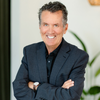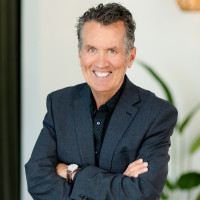
Everybody knows that the secret to healthy aging is good food, good fitness habits and good sleep.
And everybody knows that’s not enough.
Perhaps “everybody” is an overstatement, but many people across a surprisingly broad spectrum of ages seek not to stop the clock, but maybe slow it down with supplements and other products designed to build scaffolding around that obvious and effective good food/fitness/sleep combo. They may not want to add years, but they want to add vitality. They don’t hope to recapture their youth, but they want to feel the energy of youth.
The challenge for the natural products industry, and the supplement category specifically, has become pivoting the pitch away from “age reversal” or “anti-aging” towards the concept of healthy aging or managed aging and increasing “healthspan” as opposed to “lifespan,” all of this as new science makes anti-aging and even age-reversal realistic and reachable possibilities.
The Life Extension Foundation, still active in researching pathways to increased longevity, is focusing more on products for people who don’t necessarily want to live longer but to live better as they age. You can still find information on cryopreservation and parabiosis (injecting plasma stem cells from young people into older patients) through the Foundation’s web site and magazine, but more of the products and the messaging are aimed at the simple potentials of feeling better day to day. “We’ve had to really revamp our entire business model over the last couple of years,” says Dr. Michael Smith, the Foundation’s senior health scientist. “We were always evolving, but the evolution has really accelerated.”
Chromadex CEO Frank Jaksch sees the same dynamic. The company’s nicotinamide riboside branded ingredient, Niagen, elevates the presence of the NAD, a molecule in cells that can reverse mitochondrial degeneration. NAD levels fall throughout life and increasing it could restore energy and even something approaching “youth.” But Jaksch won’t say “youth.” Chromadex can point to both a study by Harvard researcher Dr. David Sinclair that showed restoration of muscle cells in older mice, and a human clinical trial published in February that showed increased NAD, but the sell is not about aging, Jaksch says. It’s about “energy.”
“When you start talking about aging and anti-aging again, people get suspicious,” Jacksch says. Energy is different. NAD deficiency is different. “That’s not a Ponce de Leon story.”
A new age for aging
The inevitability of aging hasn’t changed, but the expectations, awareness and aspirations have. Rainbow Light CEO Linda Kahler has been working in nutrition since she started at a health food store as a teenager. She believes Baby Boomers are drawing a new blueprint for aging. “We are the most active group of people hitting that 50+/60+ milestone in history.”
But for all the consciousness of prevention and aging management, many consumers in that demographic just want to feel better as they age, Kahler says. The goal is “right now” and not decades off. “People aren’t just taking products for an insurance policy but really for immediate gain. They know what they are taking is helping them sleep better or have more energy, or all of the above.”
Being healthy is great, but feeling good is the benefit. Supplements, they believe, can help make that happen.
Designing a supplement, and naming a supplement, by age bracket requires careful planning, Kahler says. Differences in formulation may be subtle. Messaging has to be subtle too. “We speak a little different language, but a lot of the science and technology with nutritional supplementation play similarly for different age groups,” Kahler says. The multivitamin for women in their 40s is named. Rejuvenage “We’re not saying ‘40+ multivitamin (on the label). We are not trying to point out the aging factor and make people feel older.”
Again, it’s about feeling “better,” and Rainbow Light shows those 40+ customers benefits that fit their concerns without pigeonholing those customers into an age bracket.
Still, for all the enlightenment and enthusiasm, the challenges may be bigger than ever. More stressful, but sedentary lives and convenient but not necessarily healthy foods haven’t set up the masses for an easy aging process. Core consumers are finding solutions, but Reserveage Nutrition founder Naomi Whittel says awareness doesn’t make aging well any easier. “We are having to fight a lot more [environmental factors]than we had to fight say 20 years ago,” Whittel says, describing that litany of stress, poor diet and sedentary habits.
Against that backdrop, the difference between aspiration and eventuality leaves a big space for supplements, Whittel says. An aging population facing more problems with aging needs more solutions. The upside of the moment, she says, is that those solutions are more soundly based in science than ever before.
From the lab
For Jacksh, the science of aging is really the science of nutrition. The pharmaceutical industry is working hard on aging solutions. He points to the Google-funded Calico biotech research outfit as an indicator of how serious big companies are taking anti-aging. It’s not all wild dreams and fountain of youth stories any more, he says.
That doesn’t mean the solutions will all come from pharmaceutical interventions and biotech. The nutrition industry has unlimited opportunity, Jaksch says, but the “innovation has to focus on the basics.” That’s where the science is headed, Jaksch says.
“What are the sciences working on right now?” Jacksh asks. “Links between nutrient deficiencies and progression of diseases.”
Chromadex’s Niagen targets NAD deficiencies and a link to mitochondrial decay. Other nutraceuticals can seek other pathways. At the Life Extension Foundation, the pathway is the AMPK enzyme. Smith explains that AMPK affects the metabolic process and how cells use and store energy. AMPK levels fall as people age, leading to a cascade of cell damage and age-associated conditions. Metformin, a pharmaceutical, stimulates AMPK activation for diabetes patients, but Smith says the Foundation designed a nutrient formula based on the same strategy. The release of AMPK
Activator “was one of the biggest launches we’ve had,” Smith says.
The science behind the product, Smith says, helped do something many other LEF products have failed at. The science assuages consumers that may think of life extension as a fringe dream. AMPK got around that stigma. “It really kind of brings together the longevity enthusiasts and the simply living-better-right-now enthusiasts,” Smith says. “It brought our customer base together”
That could be happening across the aging category.
Whittel follows the science closely and says the science isn’t just transforming healthy aging but also the way aging products are perceived. Years ago, Reserveage’s marketing efforts could find little traction with dermatologists and consumer press. Resveratrol had been dismissed as ineffective and the entire aging category was viewed with skepticism. Now, she says, the media is a far easier play.
An upcoming issue of Prevention magazine will cover aging science and Reservage products. “I never would have gotten that kind of story two years ago,” Whittel says. “Now I get them all the time.”
In the moment
Science-backed products bring legitimacy to the idea that anti-aging products can work in a short amount of time. The late-night infomercials promising to erase decades of skin damage were never believable, but validated research opens the category’s promise to people who aren’t bleary-eyed and gullible at 2 a.m.
That’s important, Whittel says, to different consumers at different ages. Reservage’s core audience is women in their early 40s, focused on prevention, primarily skin damage, but as those consumers settle into the 50+ age group, they move that focus to conditions brought on by age.
Both groups want to believe the effect is both quick and lasting. “It’s more science,” Whittel says. “But more science with fast results.”
Fast results is a huge hurdle for both science and marketing, Smith says. Tangible and immediate effects for a supplement strategy played out over decades is a tough play. He describes a hypothetical customer for AMPK Activator at 45. “Guess what they do? The stop taking it,” Smith says, “How do we convince people there is a change you can perceive at that cellular level? It’s just another challenge.”
The right benefit for the right spin
Immediate effects, long-term results and an aversion to aging that sometimes makes prevention a tough sell are all part of the tangled knot of marketing healthy aging. Erik Anderson at Nattopharma is in charge of marketing the company’s Vitamin K2 product and has seen how complicated that knot can be. Vitamin K2 was first proposed as an osteoporosis prevention product. The effects were documented. The marketing was more complex. “We can market K2 for bone health, but we instantly lose half our audience because men don’t care.”
Now Nattopharma has proof that K2 will reverse arterial stiffening. That’s a different proposition, one more gender and age neutral. “Osteoporisis is an old woman’s disease but cardiovascular starts hitting us in our 40s.”
Still, it’s not that simple. Pharmaceuticals dominate in cardiovascular. “Statins were like fluoride,” Anderson says, “They put it in the water.” Omega 3s have gotten traction in cardiovascular but for K2 “you’ve got an awareness of maybe 2 percent.”
Education is an effective answer, but even then, the focus can’t be on the scare story of cardiovascular disease, Anderson says. It’s has to be more about living than not dying. “Were selling vitality, were selling the byproduct of being healthy, the byproduct of not having stiff arteries which lead to high blood pressure, which lead to heart attack and stroke,” Anderson says.
They’re selling life.
Selling the right reward is vital, says Greg Paul global marketing manager for Dupont Nutrition and Health. Paul can look at segmentation of age and attitude and say a lot about how a product plays across both. The research has moved DuPont’s stance to an “Attitude not Age” maxim.
“Sure, you could plot out sports nutrition consumers by age and see a curve skewed towards younger consumers,” Paul says. “But, go ahead and position a protein powder to the 50+ crowd: Do you think anyone in their 20s is going to buy it? Now, flip it around. Few, if any, in their 50s will have an issue purchasing a product with a 25-year old Adonis on the label. People don’t feel or imagine themselves to be 10 – 20 years older; it is the other way around.”
Consumers want products that solve problems associated with aging but they don’t want products that are associated with aging. “Everyone knows needs change as we age, but we don’t want others to know those changes have occurred,” Paul says.
So people may shy away from “age defying” claims but that doesn’t mean they don’t want to defy age with a product markted with a younger image.
The true toll
Many of the ideas around healthy aging are clearly based on a vision of what unhealthy aging looks like. “Conventional medicine has increased lifespan, but it hasn’t increased healthy lifespan,” Smith says. “Just go to a nursing home and you’ll see older people living longer, but they don’t look good.”
They don’t feel good either.
Dr. Mike Hoaglin has appeared on the “Dr. Oz” and writes about integrative medicine, but he also works shifts in an emergency room and sees older patients using up all the space in the “What medications are you taking?” box. “The term we use in the ER is polypharmacy,” Hoaglin says.
Older patients will see a series of specialists and accumulate a series of prescriptions. More pills and protocols don’t always equal more health, Hoaglin says. Pharmaceutical companies have an interest in keeping them on those pills, he notes. “For them, the ideal situation is that every person is taking their pill every day forever.”
Still, that doesn’t mean the nutrition industry can rest in its aura of natural alternatives to “polypharmacy,” and pursue a similar sales goal of customers locked in for decades.
Hoaglin says too many nutrition products are scattershot and ill-suited to individuals facing different challenges at different life stages and taking different medications. He points to multivitamins as an example of the ubiquitous “one size fits all approach” in supplement marketing.
For “healthy aging” to become a reality through nutrition, it will have to be personalized, Hoaglin says, and that personalized nutrition is going to have to work hand-in-hand with pharmaceuticals in a the majority cases. It will also have to accommodate a moving target. “When you age, you don’t process food or anything metabolically as well,” Hoaglin says.
And so, while those many consumers may not consider eating well, exercise and sleep to be a total solution to healthy aging, the supplement industry can’t consider single products or sets of products as an unfailing solution for individual patients.
The old infomercial claims of age reversal and restored youth were empty, the supplement industry will need to work hard to keep the healthy aging concept from becoming the same.
About the Author(s)
You May Also Like





